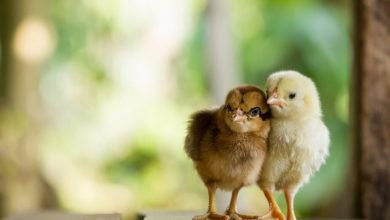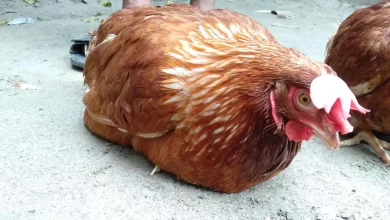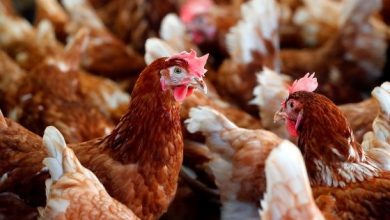Water Fowls: The potential source for table meat
R.K.Kanimozhi, P.Veeramani and H.Gopi Post Graduate Research Institute in Animal Sciences (PGRIAS), Kattupakkam-603 203
Introduction
Domestic ducks and geese trace back to two species of waterfowl each: the mallard duck (Anas platyrhynchos) and the muscovy duck (Cairina moschata), the greylag goose (Anser anser) and the swan goose (Anser cygnoides). Ducks and geese were known in ancient China and Egypt, where they had already achieved considerable status at that time. The use of duck and goose meat, eggs as well as feathers and downs has been traced back to very early times in history.
Meat and eggs of waterfowl have high nutritional value as human food. People eat meat of ducks and geese not only because they like the taste, but also for its high nutritional value, unique flavour and delicious taste. In terms of meat quality, duck meat has optimal composition of essential amino acids as well as favourable composition of fatty acids, with a high percentage of polyunsaturated fatty acids and a favourable ratio of omega 6- to omega 3-fatty acids.
Water fowl can utilize cheap feed resources on rural farms. Waterfowl kept on fish ponds increases the amount of plankton as feed for fish. Feed for ducks and geese is not commonly used for human consumption and there is no strong competition between waterfowl and human nutrition. In view of these advantages, it is assured that the ducks and geese will become increasingly important for reducing hunger and improve food security for many rural families.
Development of waterfowl meat production
Especially in countries of Eastern and Southern Asia, significant amounts of meat and eggs are produced from ducks and geese and are important for the economy of these countries. The development of waterfowl production since 1991 is shown in table 1.
Table 1: Development of global waterfowl meat production (million tons) (FAOSTAT 2011)
| 1991 | 2001 | 2009 | |
| Total Poultry meat | 43.1 | 71.5 | 92.0 |
| Duck meat | 1.33 | 2.98 | 3.81 |
| Per cent of total poultry | 3.09 | 4.16 | 4.14 |
| Goose meat | 0.77 | 1.91 | 2.47 |
| Per cent of total poultry | 1.78 | 2.67 | 2.68 |
The overall production of ducks and goose meat are in increasing trend over the years but the share of duck and goose meat of total poultry meat production increased from 4.87 % in 1991 to 6.83 % in 2001 and 6.82 % in 2009. Although ducks and geese are well known all over the world, their economic importance and contribution to food security varies considerably between continents and countries.
In general, comparison with chickens, ducks and geese play a minor role in production of meat and eggs. But in certain countries of East and South-East Asia ducks and geese produce significant amounts of meat and eggs, with a sharp rise in production during recent decades. The largest duck and goose producer is China with 65 % and 94 % of the world production, respectively. Duck egg consumption has a long tradition in China and South-East Asia with 10-30 % of total egg consumption. The production of live ducks has also been dominated by Asian countries. The five countries with the largest live duck stocks are China, Vietnam, Indonesia, India and Bangladesh.
Waterfowl is also widely used as source for feathers and downs. Waterfowl is also easier to manage than chickens in regions with hot and humid climate. Under such conditions waterfowl can be preferred as contributor to food security.
Ducks are hardy and resistant to many common poultry diseases. In some communities farmers find it more appropriate to entertain visitors with duck meat rather than chicken meat. The meat of some duck breeds, like the muscovy duck (a member of the goose family), has less fat and is considered to be more healthy. Ducks lay many and large sized eggs.
Today, duckling is still very popular and in strong demand in many areas of the world, especially in Asia. Preferences with regard to breed of duck and method of preparation vary widely. Duck meat is both uniquely tasty and nutritious. In North America, parts of Europe, and in Australia, roast Pekin duckling is a popular item on the menus of fine restaurants. Roast, braised or barbecued Pekin duckling is also popular among home gourmets. More recently duck parts, such as breast and legs have become more available, which offer more options for diet conscious consumers.
From ancient times, domestic ducks have served as a source of food and income for people in many parts of the world. Ducks are a source of meat, eggs and down-feathers (for making bedding and warm jackets). Ducks are able to subsist and grow to maturity on relatively simple diets, based on locally available feedstuffs. Duck meat and duck eggs are good dietary sources of high quality protein, energy and several vitamins and minerals. When properly included as part of a well balanced daily diet, duck meat and eggs can supply a substantial portion of the nutrients required by humans. Ducks may be raised in small or large flocks. A small flock of ducks may be kept by a household as a supplemental source of food or income. A small flock of ducks can be established at low cost.
Selection of right breeds of Duck: Selection of the breed of duck has to suits your needs. This may be a native breed that is well adapted to the weather conditions of the area where you live, or it may be a breed that performs better than local breeds, available from duck keepers in other areas or from a commercial breeder
Domestic ducks fall into the following major genetic classifications: Common Ducks Most domestic ducks fall into this group. Common ducks are believed to have originated from the Mallard (Anas platyrhynchos). Some of the better known breeds of common ducks include the Pekin, Aylesbury, Rouen, Indian Runner, Khaki Campbell, Cayuga, Albio, Maya, and Tsaiya. Different breeds and varieties of common ducks can interbreed and produce fertile offspring.
Meat Type Breeds: Pekin ducks grow rapidly, reaching approximately 90% of their adult weight at 7 weeks of age, when properly fed. It is not uncommon for commercially grown Pekin ducks to weight 3.2 kg at 7 weeks of age. Their growth rate under less favorable conditions will depend upon the quality of the diet they are fed, but even under less optimum conditions, Pekins can do quite well. The meat from Pekin ducks is very tender and succulent and known worldwide for its delicious taste. Some meat-type breeds, such as the Aylesbury and Rouen, and unimproved lines of Pekins as well, have become less popular in recent times.
The Muscovy duck is also a popular meat duck in some areas of the world. This breed is presently very popular in France. The large breast muscle of the male (often weighing 700 grams at 13 weeks) gives this breed an advantage over common ducks which have considerably less breast muscle.
Mule ducks are an improvement over the pure Muscovy in that the difference in size between males and females is not nearly as great, and are superior to the Pekin in that they have more lean meat.
Egg Type Breeds: Eggs for human consumption are the product desired, then choose a high egg producing breed of duck such as the Khaki Campbell, Tsaiya or Indian Runner. These breeds are capable of laying in excess of 230, and in some cases, over 300 eggs per year. These breeds are usually considerably smaller in body size than meat-type ducks. Although Pekin ducks are usually bred for their meat, some high egg producing commercial strains of Pekin or Pekin-like ducks have been developed. The non descript or local ducks of Tamilnadu ( Sanyasi and Keeri variety), Kerala (Kuttanad variety) are also classified under egg type ducks with higher egg production.
Multi-purpose breeds: Often ducks are kept as a source of both meat and eggs, and for their feathers as well. A number of breeds such as the Pekin, Aylesbury, and Maya (China) can meet these requirements. Some compromise is necessary when a strain is selected for both meat and eggs. Generally ducks that reach heavy weights at market age are not the best egg layers, and ducks that are good egg producers, are smaller in body size. A dual purpose line is usually selected for moderate body size and satisfactory egg production. Local breeds are often good choices if both meat and eggs are needed.
Characteristics of duck meat: Duck meat has a unique combination of red meat and poultry meat characteristics. Like red meat, duck meat has relatively high fat content and levels of intramuscular phospholipids, which play a substantive role in the development of meat flavor. High levels of iron and heme pigment also make duck meat appear darker than most other poultry. Duck meat with skin has distinctively higher fat and iron content compared with chicken and turkey meat. However, like chicken and turkey, duck meat is rich in unsaturated fatty acids and is thus beneficial for human health.
The nutritional composition of duck meat varies depending on the breed and strain of duck. For example, Pekin duck (Anas platyrhynchos domesticus) meat contains more fat than Muscovy duck (Cairina moschata). Duck meat is also more easily influenced by the feed fed to them. The fatty acid content of duck meat is dominated by oleic acid (C18:1), a monounsaturated fatty acid; palmitic acid (C16), a saturated fatty acid; and linoleic acid (C18:2), a polyunsaturated fatty acid. Some researchers have reported that duck feeds may be modified to yield duck meat that contains more unsaturated fatty acid and less saturated fatty acid. Although this improves its value for human health, the high concentration of unsaturated fatty acids makes duck meat very susceptible to lipid oxidation.
Meat ducks should be marketed alive or slaughtered between 7 to 8 weeks of age. A delay in marketing after this age will make processing difficult especially when new quills appearing during the ages of 9 to 14 weeks.
The farmer must ensure that in order to have a good sale, the meat duck produced should have a well rounded breast filled with meat and showing very little breastbone as required by the consumers.
CONCLUSION
With the low inputs (such as feed) thus, the ducks are capable of producing the best animal proteins for human consumption as meat and egg. Since, the meat of duck has all the essential nutrients at favourable composition required for human consumption; it can be strongly included in the human diet. Finally, it may be concluded that, ducks will be the better choice to reduce the protein scarcity for humans at a very reasonable cost.



